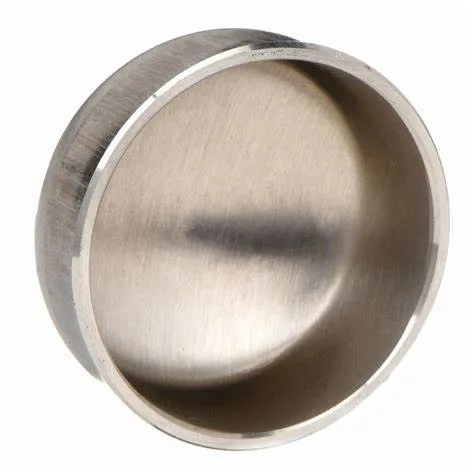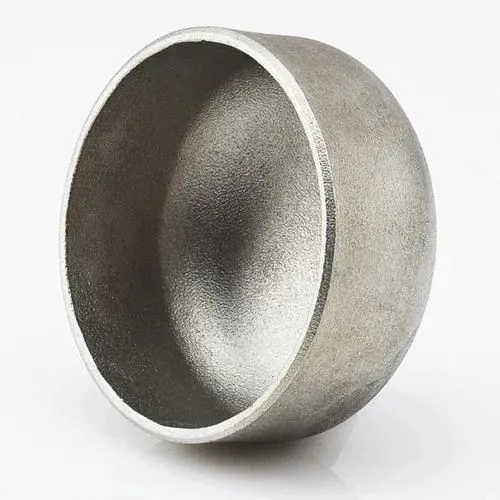JIS B2311 is een Japanse industriële norm die betrekking heeft op stuiklasfittingen, inclusief doppen die in leidingsystemen worden gebruikt. Stomplasdoppen dienen voor het afsluiten van het uiteinde van een buis en zorgen voor een afdichting om lekkage of vervuiling te voorkomen. Hier is een inleiding tot JIS B2311 stomplaskappen:
- 1. JIS B2311 Standard:
- - De JIS B2311-norm specificeert de vereisten voor het ontwerp, de afmetingen, de materialen, de productie en het testen van stomplasfittingen, inclusief doppen, in leidingsystemen.
- - De norm zorgt ervoor dat doppen die zijn geproduceerd in overeenstemming met de JIS-normen, voldoen aan de kwaliteitsnormen en compatibel zijn met andere leidingcomponenten.
- 2. Stomplasdop:
- - Een stomplasdop, volgens JIS B2311, is een fitting die is ontworpen om het uiteinde van een buis veilig af te dekken en af te dichten, waardoor bescherming wordt geboden en de integriteit van het leidingsysteem wordt behouden.
- - Doppen worden gebruikt in situaties waarin het uiteinde van de leiding moet worden afgesloten, permanent of tijdelijk, om lekkage of verontreiniging te voorkomen of om het systeem af te werken.
- 3. Materiaal en constructie:
- - Stomplaskappen volgens JIS B2311-specificaties zijn verkrijgbaar in verschillende materialen zoals koolstofstaal, roestvrij staal en gelegeerd staal om aan verschillende toepassingsvereisten te voldoen.
- - Deze doppen zijn vervaardigd met behulp van gestandaardiseerde constructiemethoden om een sterke en lekvrije verbinding te garanderen wanneer ze aan het uiteinde van een buis worden gelast.
- 4. Toepassing en voordelen:
- - Stomplasdoppen vinden toepassingen in verschillende industrieën, waaronder olie en gas, chemische processen, waterzuiveringsinstallaties en meer, waar buisuiteinden veilig moeten worden afgedekt.
- - Doppen bieden bescherming aan buisuiteinden tegen omgevingselementen, voorkomen vervuiling en helpen de netheid en integriteit van het leidingsysteem te behouden.
- 5. Installatie en lassen:
- - Juiste installatiepraktijken, inclusief correcte uitlijning, voorbereiding van het buisuiteinde en lastechnieken, zijn essentieel bij het installeren van stomplasdoppen om een strakke en lekvrije afdichting te garanderen.
- - Lassen is een gebruikelijke methode om doppen aan leidingen te bevestigen, waardoor een veilige en permanente afsluiting ontstaat die bestand is tegen druk, temperatuurschommelingen en vloeistofstroming in het systeem.
- Samenvattend zijn JIS B2311 stomplaskappen cruciale componenten die worden gebruikt in leidingsystemen om het uiteinde van buizen veilig af te dichten en te beschermen. Deze doppen voldoen aan gestandaardiseerde eisen om kwaliteit, betrouwbaarheid en compatibiliteit te garanderen binnen industriële toepassingen waar buisafsluiting en bescherming noodzakelijk zijn.
What Is a Butt Welding Cap and How Is It Used in Industrial Piping?
In industrial piping systems, end-of-line sealing and branch closures require robust solutions. A butt welding cap serves as a critical component for terminating pipes securely. By providing a seamless, welded closure, this fitting maintains system integrity, prevents leaks, and supports compliance with industry standards.
What Is a Butt Welding Cap?
A butt welding cap—also called a pipe end cap or buttweld end cap—is a round fitting designed to close off the end of a pipe. It’s manufactured to match the pipe’s outer diameter and schedule, with either a hemispherical or flat face. To install, both the pipe end and cap are beveled to form a V‑groove, enabling full‑penetration, fusion welds. Common materials include carbon steel, stainless steel, nickel alloys, and other engineered grades, chosen to satisfy pressure, temperature, and corrosion‑resistance requirements.
How Is Butt Welding Cap Used in Industrial Piping?
Butt welding caps find application across oil & gas, petrochemical, power generation, water treatment, and general process industries for both permanent and temporary closures. During hydrostatic testing, technicians install caps to seal off sections of piping while monitoring for leaks. In new construction or retrofit projects, caps terminate branch lines, future tie‑in spools, or dead‑end mains until system expansion. Welders prepare each joint by cleaning and beveling surfaces, aligning the cap precisely, and executing a root pass followed by filler passes per the qualified Welding Procedure Specification (WPS). Post‑weld heat treatment and non‑destructive examination (NDE)—such as radiography or ultrasonic testing—verify weld integrity and compliance with ASME B16.9 and related standards. Additionally, temporary caps enable safe isolation during maintenance, allowing for segment testing and dewatering under regulatory protocols.
Benefits and Best Practices
Butt welding caps offer a smooth‑bore transition that minimizes flow disruption and stress concentration. Their full‑penetration welds deliver exceptional structural strength and leak resistance. To optimize performance, engineers should:
Select caps with matching material grades and wall thicknesses
Adhere to proper bevel angles and joint fit‑up tolerances
Follow qualified WPS protocols rigorously
Consider cladding or protective coatings in corrosive environments to extend service life
Regular inspection and thorough documentation ensure long‑term reliability and safe operation under demanding conditions.
Butt welding caps are indispensable components for achieving durable, leak‑proof pipe terminations in a wide range of industrial applications.
Butt Welding Cap FAQs
What is a butt welding cap?
|
What materials are commonly used?
|
What standards govern butt welding caps?
|
How are butt welding caps installed?
|
Where are butt welding caps typically used?
|
What are the advantages of threaded caps?
|
















